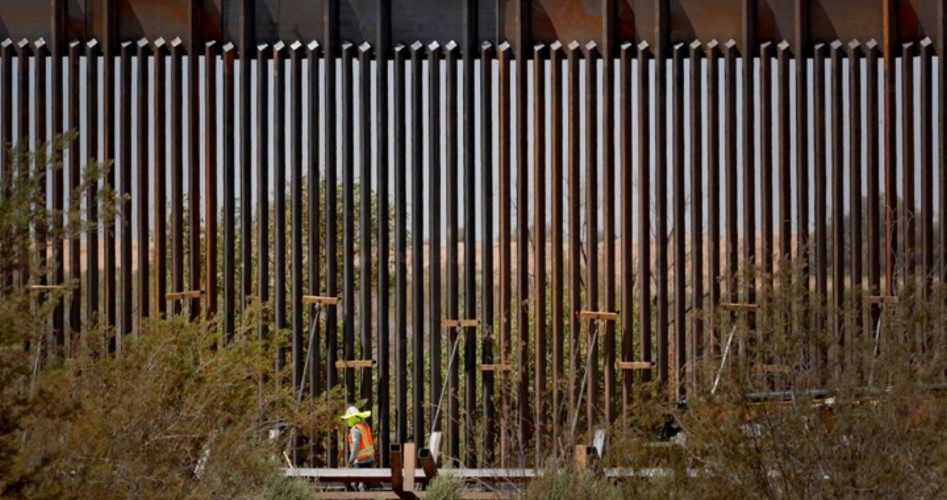
Podcast: Play in new window | Download ()
Subscribe: Android | RSS | More
Illegal crossings across the Southwest U.S. border with Mexico dropped dramatically late last year after the Trump administration instituted its Migration Protection Protocols (MPP) — a policy of making asylum-seekers wait in Mexico for hearings in U.S. courts. The decrease was most evident in the U.S. Border Patrol’s Yuma sector.
There were nearly 14,000 arrests in the Yuma sector back in May, when the policy to make asylum-seekers wait in Mexico first took effect there. But by October, they fell 94 percent, to less than 800, and have stayed there since. Yuma is now the second-slowest of the Border Patrol’s nine sectors on the Mexican border, after the normally quiet Big Bend sector in Texas.
A January 19 AP report quoted Anthony Porvaznik, chief of the Yuma sector, who said the Migration Protection Protocols have been a huge deterrent, based on agents’ interviews with people arrested.
“[The migrants’] whole goal was to be released into the United States, and once that was taken off the shelf for them, and they couldn’t be released into the United States anymore, then that really diminished the amount of traffic that came through here,” Porvaznik said.
The Homeland Security website defines Migration Protection Protocols (MPP) as “a U.S. Government action whereby certain foreign individuals entering or seeking admission to the U.S. from Mexico — illegally or without proper documentation — may be returned to Mexico and wait outside of the U.S. for the duration of their immigration proceedings, where Mexico will provide them with all appropriate humanitarian protections for the duration of their stay.”
In the neighboring Tucson sector, in contrast, arrests rose each month from August to December, making it the second-busiest corridor after Texas’ Rio Grande Valley. Porvaznik attributes Tucson’s spike to the absence of the MPP policy there until three months ago.
Former Secretary of Homeland Security Kirstjen M. Nielsen explained her department’s reason for putting the MPP into effect a year ago: “We have implemented an unprecedented action that will address the urgent humanitarian and security crisis at the Southern border. This humanitarian approach will help to end the exploitation of our generous immigration laws. The Migrant Protection Protocols represent a methodical commonsense approach, exercising long-standing statutory authority to help address the crisis at our Southern border.”
The December figure of less than 800 apprehensions of illegal border crossers is in stark contrast to the 50,753 people arrested for trespassing from Mexico in December 2018, according to figures released by CBP in January 2019. A January 2020 news release from CBP stated: “CBP enforcement actions on our Southwest Border decreased by 5% in December as compared to November, representing a 72% decrease since the peak of the humanitarian and border security crisis in May.”
The recent AP report noted that more than 55,000 asylum-seekers were returned to Mexico to wait for hearings through November, 10 months after the policy was introduced in San Diego.
There has also been a change in the national makeup of those apprehended at the border. We noted last November that U.S. Border Patrol agents in the San Diego sector arrested more non-Mexicans attempting to cross the U.S.-Mexico border illegally during the 2019 fiscal year than at any other time in the agency’s history.
Photo: AP Images
Warren Mass has served The New American since its launch in 1985 in several capacities, including marketing, editing, and writing. Since retiring from the staff several years ago, he has been a regular contributor to the magazine. Warren writes from Texas and can be reached at [email protected].
Related articles:
Illegal Border Crossings Decreased 40 Percent During Trump’s First Month
Illegal-alien Arrests Up Nearly 40 Percent Under Trump
Dramatic Drop of Illegal Border Crossers Since Trump Took Office
Illegal Border Crossings Decreased 40 Percent During Trump’s First Month
Illegal Migration Across Border Reaches New High in November
DHS Publishes Memoranda on Immigration Policy to Secure the Border
Border Patrol Dealing With Increase in Central American Migrants
Illegal Border Crossings for October Climb to More Than 46,000
Anticipating Trump Crackdown on Illegals, Central Americans Surge to Border


